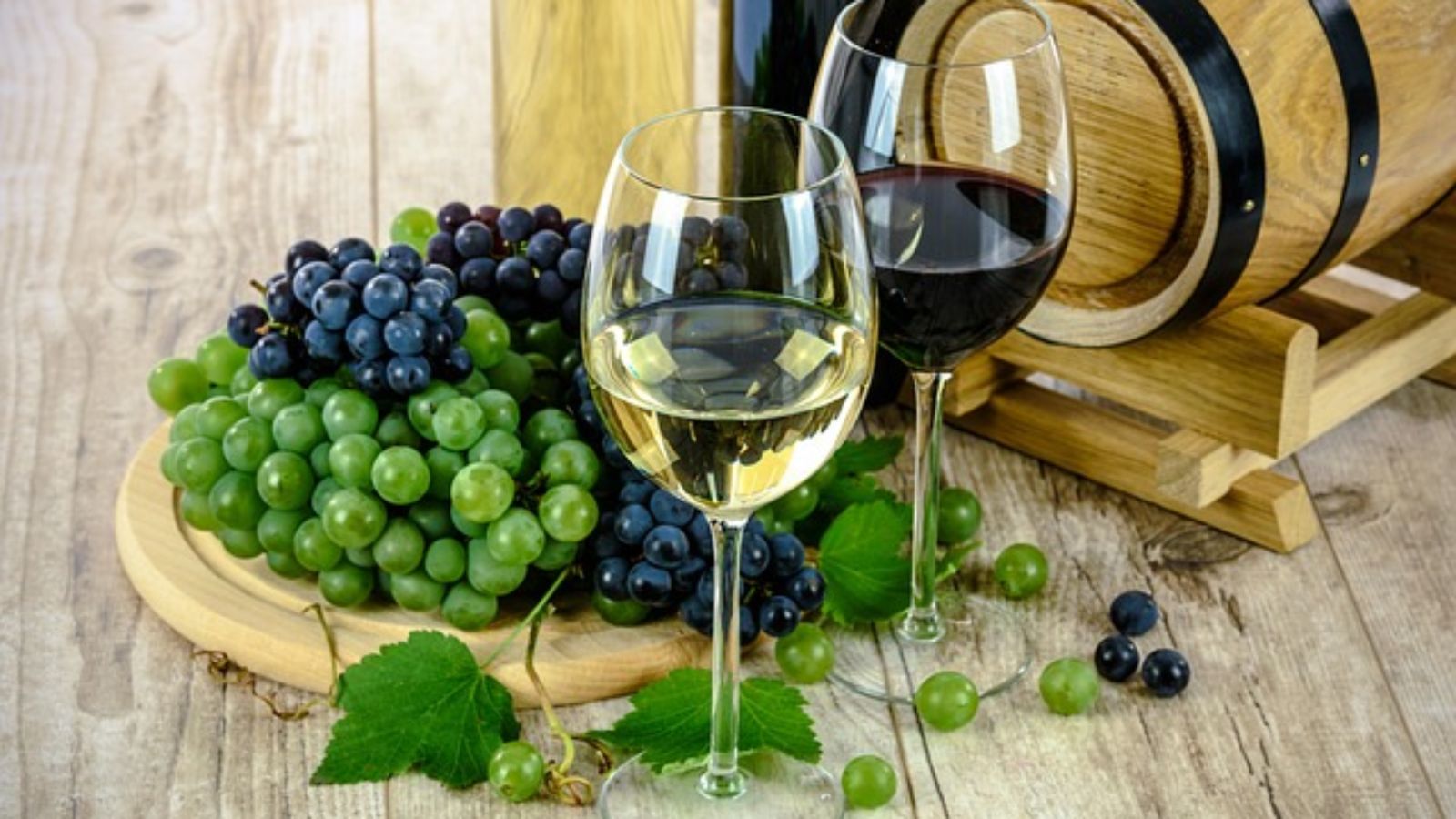Exploring the World of Wine: A Beginner’s Guide to Pairing

Wine has been an integral part of human culture for centuries, celebrated for its rich flavors, deep history, and ability to elevate any occasion. But for many, the world of wine can be intimidating, especially when it comes to pairing it with food. How do you know which wine goes best with steak or seafood? Do you need a specific wine for cheese?
In this beginner's guide, we’ll explore the basics of wine pairing, provide simple tips to help you discover the perfect wine for any meal, and guide you through common pairings that will enhance your dining experience. Whether you're a wine novice or looking to refine your palate, this guide will give you the tools to pair like a pro.
Understanding Wine Basics
Before diving into the world of wine pairing, it’s helpful to have a basic understanding of different types of wine. There are several varieties of wine, each with unique characteristics, and knowing these will help you navigate the pairing process.
Red Wines
Red wines are made from dark-colored grape varieties and are often characterized by tannins, acidity, and bold flavors. The tannins in red wine come from the grape skins, seeds, and stems, and can make the wine feel dry in your mouth.
- Popular Red Wines:
- Cabernet Sauvignon: Known for its bold tannins and rich, fruity flavors like black currant and blackberry.
- Merlot: A smoother, fruitier red, often with flavors of plum, cherry, and chocolate.
- Pinot Noir: Lighter-bodied with softer tannins and flavors of cherry, raspberry, and earthy undertones.
White Wines
White wines are generally made from green grapes and tend to have a lighter, crisper profile compared to reds. They often feature fruity, floral, or citrusy flavors.
- Popular White Wines:
- Chardonnay: Can be rich and full-bodied (oaked) or crisp and clean (unoaked), with flavors ranging from apple and pear to butter and vanilla.
- Sauvignon Blanc: Known for its sharp acidity and citrus flavors like lime, grapefruit, and green apple.
- Pinot Grigio: A light, refreshing white with flavors of lemon, lime, and green apple.
Rosé Wines
Rosé wines are made from red grapes but have limited skin contact, giving them a pinkish hue. They offer a balance between the boldness of reds and the crispness of whites.
- Popular Rosé Wines:
-
Provence Rosé: Light and dry with flavors of strawberry, melon, and citrus.
-
White Zinfandel: A sweeter rosé with flavors of red berries and a touch of sweetness.
-
Sparkling Wines
Sparkling wines, such as Champagne, are carbonated, which gives them their signature bubbles. These wines are often celebratory and versatile when it comes to pairing.
-
Popular Sparkling Wines:
- Champagne: A luxurious, effervescent wine with flavors of apple, citrus, and toasted bread.
- Prosecco: A lighter, fruitier sparkling wine with flavors of green apple, pear, and melon.
Sweet Wines
Sweet wines are often served as dessert wines or paired with savory dishes for contrast. They feature high sugar content and can range from lightly sweet to intensely rich.
- Popular Sweet Wines:
- Moscato: A sweet, fruity wine with flavors of peach, orange blossom, and apricot.
- Port: A rich, fortified wine with deep flavors of blackberries, plums, and chocolate.
Basic Principles of Wine Pairing
When it comes to pairing wine with food, there are no hard and fast rules, but there are some general principles that can guide you.
1. Match Intensity
Pair lighter wines with lighter dishes and heavier wines with richer, more flavorful foods. For example, a light Sauvignon Blanc works well with a delicate fish dish, while a bold Cabernet Sauvignon pairs better with a hearty steak or grilled meats.
2. Complement or Contrast
You can either complement the flavors of the dish with the wine or create a contrast that enhances the experience. For example:
- Complementing Flavors: A buttery Chardonnay pairs beautifully with creamy pasta dishes.
- Contrasting Flavors: A crisp, acidic Sauvignon Blanc can cut through the richness of a fatty dish, like goat cheese or fried foods.
3. Regional Pairing
Often, the best wine pairing comes from the same region as the food. For instance, Italian wines like Chianti pair excellently with pasta dishes, and French wines like Bordeaux complement French cuisine like duck or foie gras.
4. Sweet with Spicy
When pairing wine with spicy foods, a slightly sweeter wine can help balance the heat. A slightly sweet Riesling works well with spicy Asian dishes, while a chilled Rosé can pair nicely with barbecue.
Common Wine Pairings
Now that you understand the basics of wine, let’s dive into some popular food and wine pairings.
1. Red Wine Pairings
- Steak: A full-bodied red wine like Cabernet Sauvignon or Malbec pairs well with the rich flavors of grilled steak. The tannins in the wine complement the texture of the meat, and the bold flavors balance the richness of the beef.
- Roast Lamb: Pinot Noir is an excellent match for roast lamb, as its earthy undertones and berry flavors complement the tender, savory meat.
- Cheese: Bold cheeses like cheddar, blue cheese, and gouda work well with full-bodied reds like Cabernet Sauvignon or Syrah. The tannins in the red wine help cut through the creaminess of the cheese.
2. White Wine Pairings
- Chicken or Turkey: Light white wines like Sauvignon Blanc or Chardonnay are a great match for poultry dishes. Sauvignon Blanc's crisp acidity complements the delicate flavors of chicken, while Chardonnay’s richness pairs well with roasted or creamy chicken dishes.
- Seafood: A crisp white wine like Pinot Grigio or Sauvignon Blanc enhances the light flavors of seafood. For dishes like shrimp scampi or grilled fish, these wines are a refreshing choice.
- Salads: A light, acidic white wine like Sauvignon Blanc pairs wonderfully with fresh salads, especially those with vinaigrette dressings.
3. Sparkling Wine Pairings
- Appetizers and Finger Foods: Sparkling wines, particularly Champagne or Prosecco, are incredibly versatile and pair well with a wide variety of foods, from cheese and crackers to salty appetizers like olives or charcuterie.
- Fried Foods: The bubbles in sparkling wine, along with its acidity, make it an excellent match for fried foods. Try pairing Champagne with fried chicken or French fries for a delicious contrast of textures.
4. Sweet Wine Pairings
- Desserts: Sweet wines like Moscato or Sauternes are fantastic companions to desserts. Moscato pairs well with fruit-based desserts, while Sauternes complements richer desserts like crème brûlée or foie gras.
- Spicy Cuisine: Sweet wines like Riesling or Gewürztraminer are great with spicy dishes, such as Thai or Indian food, as the sweetness balances the heat.
Tips for Beginners
- Don’t Overthink It: Wine pairing doesn’t need to be complicated. If you like the wine and you like the food, it’s probably a good match!
- Experiment: The best way to learn about wine pairing is through trial and error. Don’t be afraid to try different combinations and see what works for you.
- Start with the Wine: When planning your meal, choose your wine first, then select dishes that will pair well with it. This approach ensures the wine is the star of the show.
- Take Notes: As you explore wine pairings, keep track of which combinations you enjoy. Over time, you’ll develop your own preferences and deepen your understanding of wine.
Wine pairing can seem overwhelming at first, but with the right knowledge and a willingness to experiment, it becomes an enjoyable and rewarding experience. By understanding the basics of wine, the principles of pairing, and trying out a few classic combinations, you'll find that crafting the perfect wine pairing for any meal is within reach. Cheers to your new adventure in the world of wine!
-1745569762.jpg)
Food Trends of 2025: What’s Hot in the Culinary World?
-1745569769.jpg)


-1745569762.jpg)
-1745569771.jpg)
